Barcode or RFID? Choosing the Right Technology for your Inventory System

Keeping track of inventory is a challenge many businesses face, from small shops to large warehouses. As your operations grow, so does the need for efficient, accurate inventory management.
Both barcodes and RFID technology have become go-to solutions for businesses looking to optimize their inventory processes. Each technology brings its own unique benefits and challenges, providing different ways to track and manage products effectively.
In this guide, we’ll discuss both barcodes and RFID, exploring how they work and where they excel.
What are Barcodes?
A barcode is a visual, machine-readable representation of data. It consists of a series of lines or patterns that can be scanned by a barcode reader to extract the encoded information. This data can be a number, text, or other information.
Barcodes have been a staple in inventory management for decades. You've likely encountered them countless times in your daily life - they're those familiar patterns of parallel lines and spaces printed on product packaging or labels.
In inventory management, this data typically includes information such as product identification number (SKU or UPC), product name, price, manufacturer, and date of manufacture or expiration.
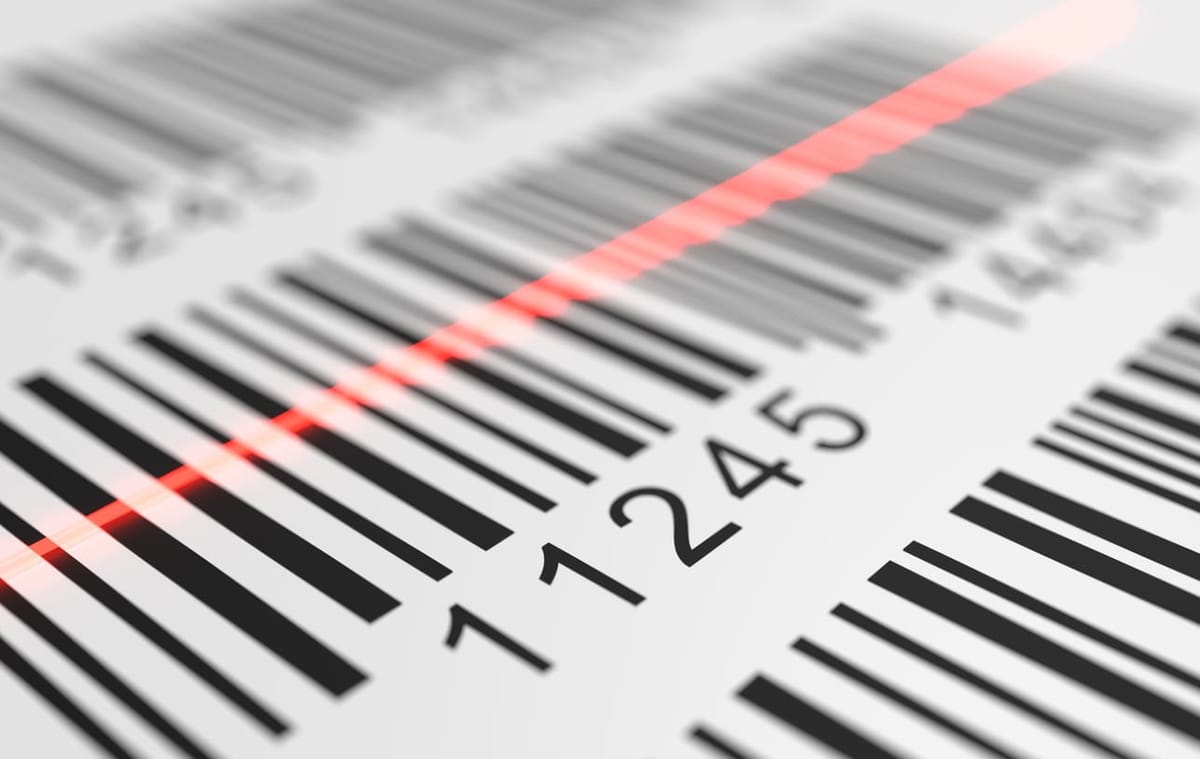
Components of a Barcode System
- Barcode Labels: Printed tags that contain barcodes, which store information in a visual pattern readable by machines.
- Scanners: Devices that read the barcode information by scanning the printed labels.
- Barcode Printers: Used to produce barcode labels with customized information for each item.
- Software: Manages data collected from scanned barcodes, integrating it into inventory management systems.
📚 Read more: How to Choose your Barcode Scanner
How Barcodes Work
Barcodes function by encoding information into a series of parallel lines of varying widths. When a barcode scanner passes over these lines, it reads the pattern and translates it back into data. This data is then transmitted to a central inventory system where it updates inventory count.
Here's how the process typically works in a business setting:
- Products are labeled with barcodes, either by the manufacturer or the business itself.
- When a product arrives at the warehouse or store, an employee scans the barcode.
- The scanned information is automatically entered into the inventory management system.
- As products are sold or moved, their barcodes are scanned again to update the inventory count.
This system allows for real-time tracking of inventory levels, reducing errors that can occur with manual data entry.
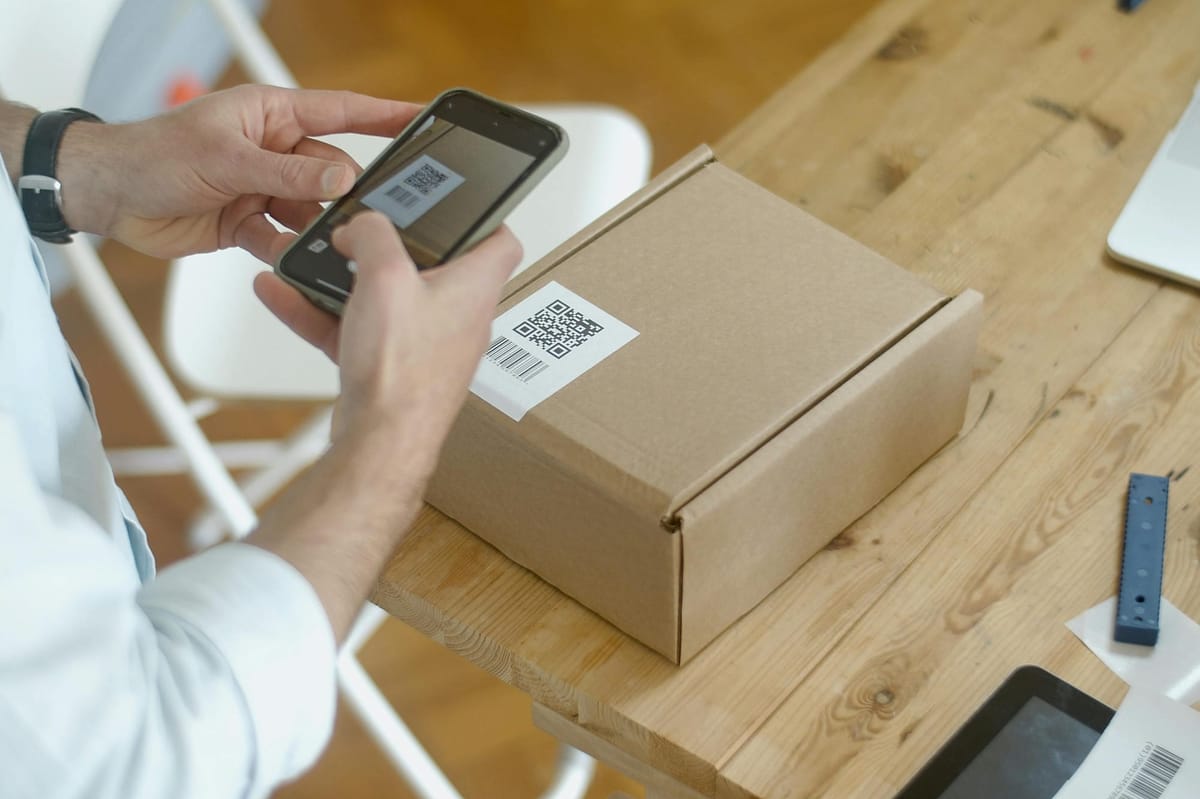
Types of Barcodes
- 1D Barcodes: Traditional barcodes that store information horizontally and are widely used in retail for product identification.
- 2D Barcodes: Store information both horizontally and vertically, allowing them to hold more data. Examples include QR codes which are used for quick access to websites or additional product details.
🔷 Pros of Barcode Technology
- Cost-effective: Barcode systems are relatively inexpensive to implement and maintain.
- Widely adopted: Most suppliers and partners are already familiar with barcode systems.
- Versatile: Barcodes can be used on a wide range of products and packaging types.
- Accurate: Barcode scanning significantly reduces human error in data entry.
- Easy to use: Minimal training is required for staff to use barcode scanners effectively.
🔷 Cons of Barcode Technology
- Barcodes have a line-of-sight requirement, i.e. they must be visible to be scanned, which can slow down processes for items stored in boxes or bins.
- Each item must be scanned individually, which can be time-consuming for large inventories.
- Barcode labels can become damaged or worn, making them unreadable.
- Standard barcodes have limited data capacity. They can only hold a small amount of information.
BoxHero offers a robust barcode scanning feature that simplifies inventory management for businesses of all sizes. With our improved barcode printing feature, you can easily generate and print barcodes directly from BoxHero’s platform, enhancing the efficiency of tracking and managing your stock.
Use Cases for Barcode Technology
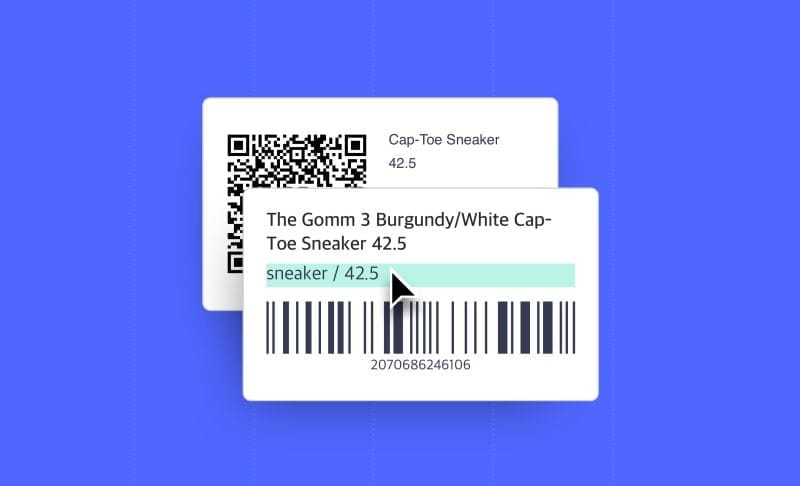
Barcodes are particularly well-suited for:
- Retail environments: From small boutiques to large department stores, barcodes help track sales and manage stock levels efficiently.
- Libraries: Barcodes on books allow for easy check-out and inventory management.
- Healthcare: Hospitals and pharmacies use barcodes to track medications and reduce errors.
- Manufacturing: Barcodes help track parts and products through the production process.
📚 Read more: 5 Best Inventory Management Software With Barcode Scanning
What is RFID Technology?
Radio Frequency Identification (RFID) technology uses electromagnetic fields to automatically identify and track tags attached to objects. Unlike barcodes, RFID does not require line-of-sight to work and can read multiple tags simultaneously, making it an effective tool for managing large volumes of high-value items.
Components of RFID
RFID systems consist of four main components:
- RFID tags: Small devices containing a microchip and an antenna
- RFID readers: Devices that emit radio waves and receive signals from RFID tags
- Antennas: Facilitate the transmission and receipt of radio signals between tags and readers.
- Software: Programs that process and manage the data collected by the readers and store them in databases.
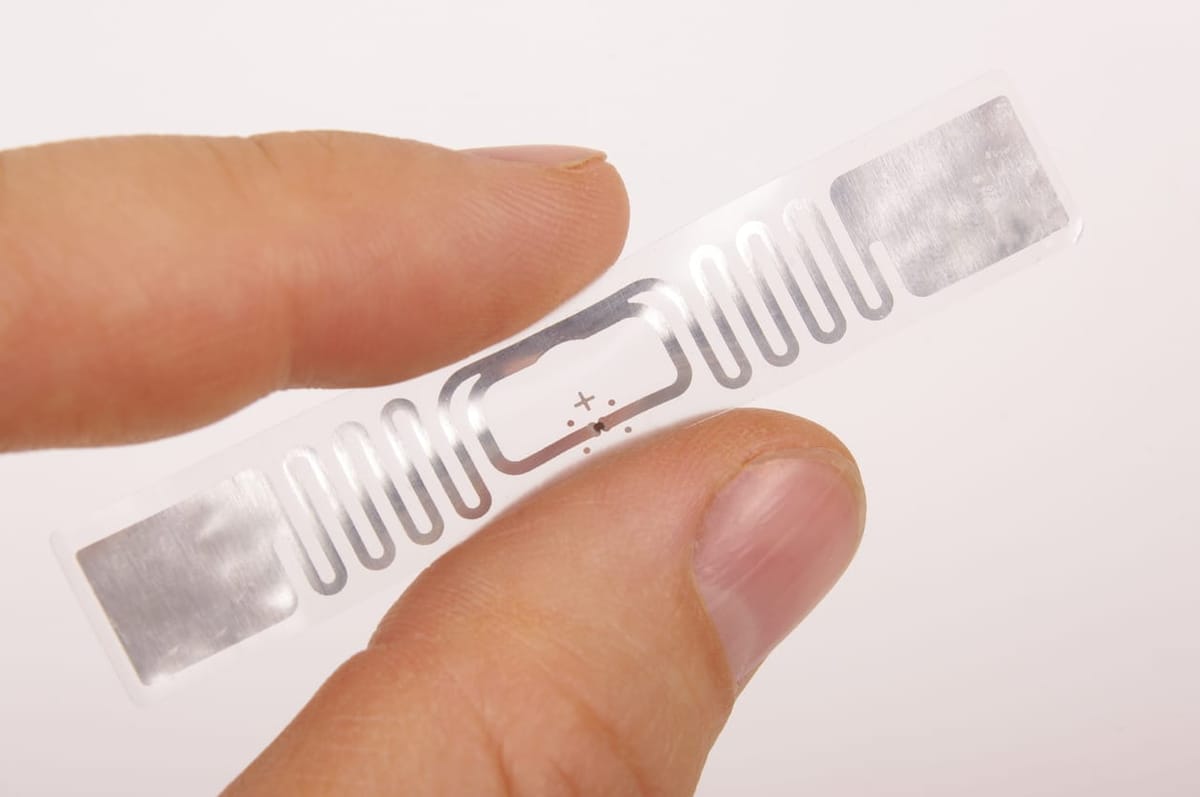
How RFID Works
Here's how RFID typically functions in an inventory setting:
- RFID tags are attached to products or pallets. These tags contain unique identifiers and can sometimes store additional information about the product.
- RFID readers, which can be handheld devices or fixed units, emit radio waves.
- When an RFID tag comes within range of a reader, it's activated by the radio waves and transmits its stored information back to the reader.
- The reader captures this data and sends it to the RFID software, which updates the inventory management system in real-time.
This process allows for bulk scanning of multiple items at once, without needing direct line-of-sight for each item.
Types of RFID
RFID technology can be categorized into three main types based on their power source and range:
- Active RFID: These tags have their own power source (typically a battery), enabling them to transmit signals over longer distances (up to 100 meters or more). They are suitable for tracking large assets over wide areas.
- Passive RFID: These tags do not have their own power source and are powered by the electromagnetic energy from the RFID reader. They are less expensive and are used for shorter range applications (a few meters).
- Semi-passive RFID: These tags are similar to passive tags but include a small battery to power the tag's circuitry. This allows them to operate over greater distances than passive tags but less than active tags.
🔷 Pros of RFID Technology
- Bulk scanning: RFID can read multiple tags simultaneously, greatly speeding up inventory counts.
- No line-of-sight required: Tags can be read even when not directly visible, useful for boxed items.
- Durability: RFID tags are often more durable than barcode labels and can withstand harsh environments.
- Real-time tracking: RFID enables continuous, automatic updating of inventory data.
- Increased data capacity: RFID tags can store more information than standard barcodes.
🔷 Cons of RFID Technology
- RFID systems are generally more expensive to implement than barcode systems.
- Metal and liquids can interfere with RFID signals, potentially causing read errors.
- RFID systems are more complex to set up and maintain than barcode systems.
- The ability to read tags from a distance raises potential privacy issues.
- There are multiple RFID standards, which can cause compatibility issues.
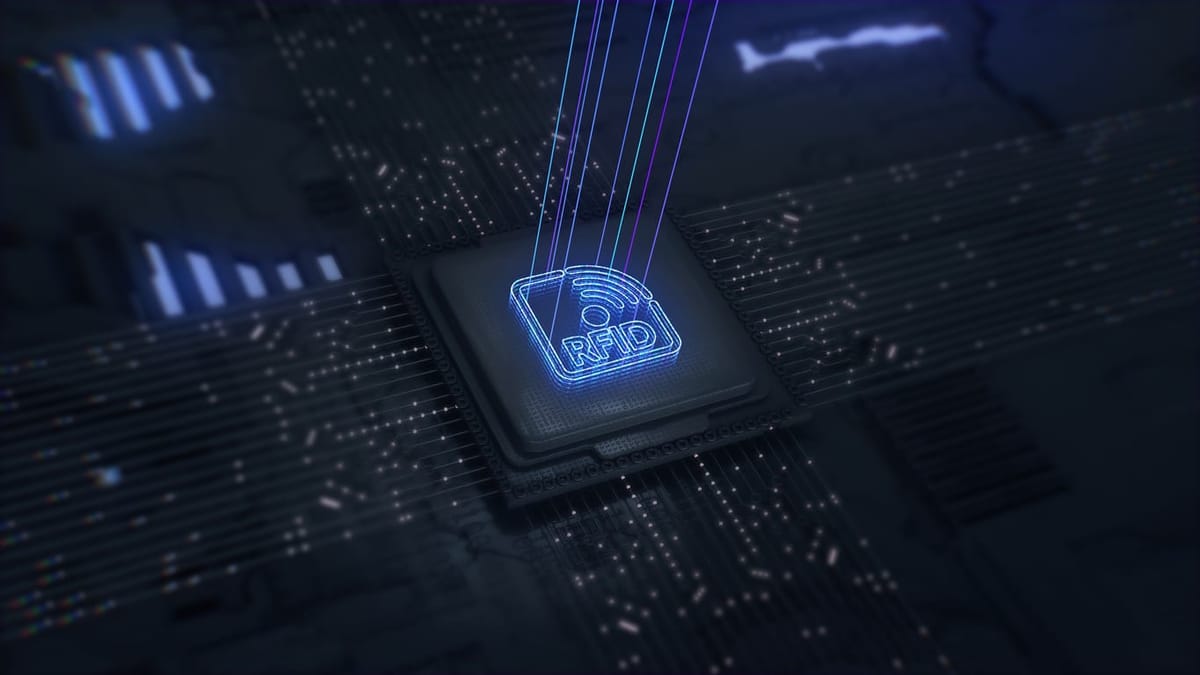
Use Cases for RFID Technology
RFID is particularly beneficial in:
- Large warehouses: Where the ability to conduct rapid, bulk inventory counts is important.
- Retail: For tracking high-value items and preventing theft.
- Supply chain management: For tracking shipments and managing complex logistics.
- Healthcare: For tracking expensive equipment and ensuring patient safety.
- Manufacturing: For monitoring work-in-progress and managing just-in-time production.
Choosing the Right Technology for Your Business
Selecting the right inventory management technology is a critical decision that can significantly impact your business operations. Let's explore the key factors to consider when making this decision.
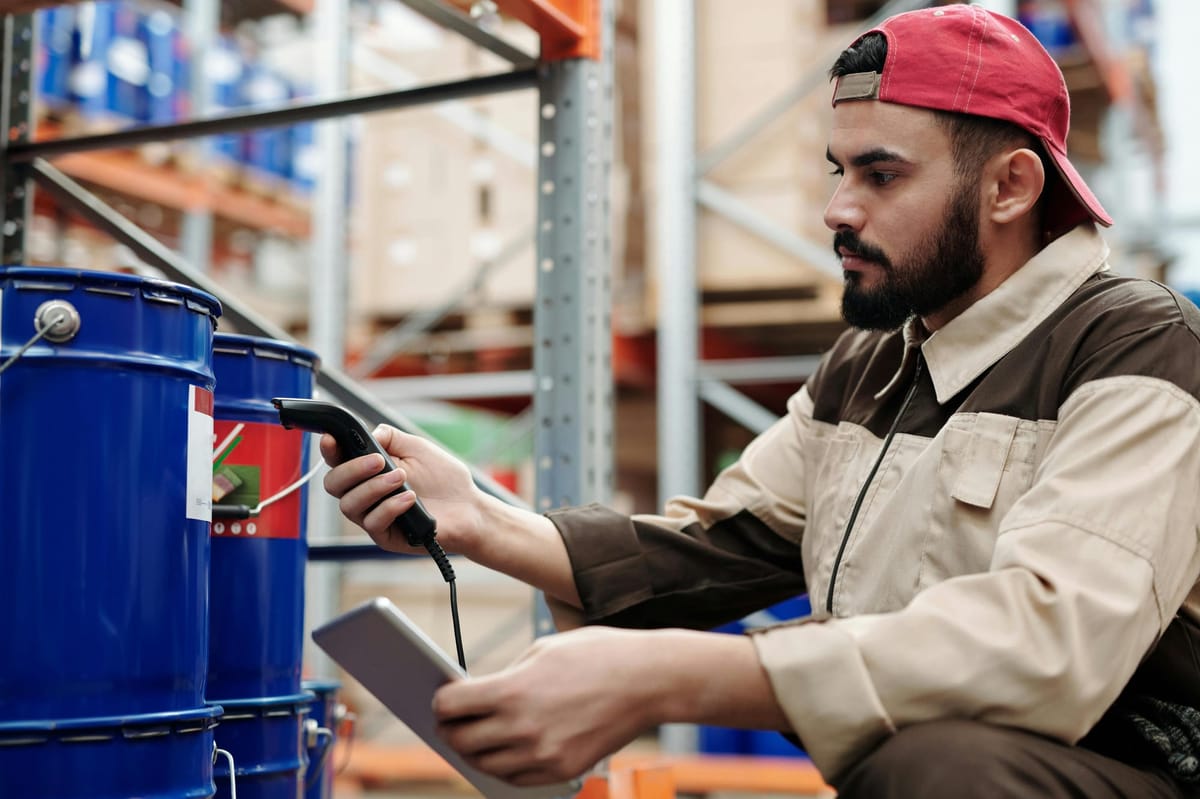
1. Assess Your Current Situation
Begin by evaluating your existing inventory management processes. Ask yourself:
- What are the main challenges you face in tracking inventory?
- How many items do you typically manage?
- How frequently do you conduct inventory counts?
- Do you need real-time tracking of items as they move through your facility?
Understanding your current pain points will help you identify where technology can make the most significant impact.
"Before implementing any new inventory tracking tool, you must first establish solid, repeatable tasks & processes. If you implement a new tool and "make it work" into your existing broken environment, then you will just end up with a really expensive hammer that no one wants to use."
— Michael Valenzuela, Finance & Inventory Expert
2. Consider Your Budget
Budget often plays a decisive role in technology adoption. Barcode systems generally offer a lower initial investment, making them attractive for small to medium-sized businesses.
However, don't dismiss RFID solely based on upfront costs. While more expensive initially, RFID can provide long-term savings through increased efficiency and accuracy, especially for larger operations.
3. Evaluate Your Operational Scale
The size and complexity of your operations significantly influence the choice between barcodes and RFID:
- Small to medium operations: Barcodes often suffice, providing a good balance of cost and functionality.
- Large-scale operations: RFID's ability to conduct rapid, bulk scans becomes increasingly valuable as inventory volume grows.
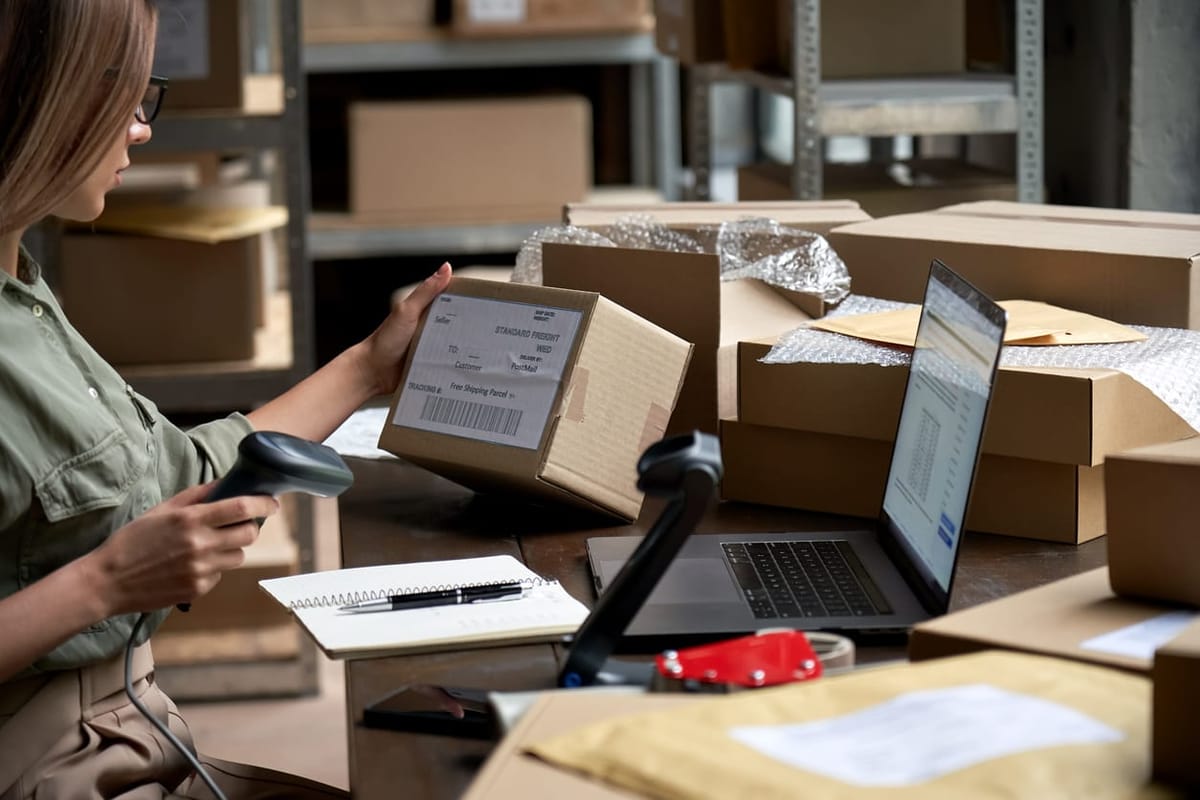
4. Analyze Your Product Types
The nature of your products can impact the effectiveness of each technology:
- Products made of metal or liquids may interfere with RFID signals, making barcodes a better choice.
- High-value items might benefit from the enhanced security and tracking capabilities of RFID.
- Products that are easy to handle and scan individually (like books or clothing) work well with barcodes.
5. Assess Your Need for Automation
If minimizing human intervention and enhancing processing speed in inventory tracking is a priority, RFID offers significant advantages. It allows for more automated processes (i.e. scan multiple items simultaneously), potentially reducing labor costs and human error.
6. Examine Integration Requirements
Consider how well each technology would integrate with your current inventory management software and other business systems. Compatibility with existing infrastructure can significantly impact implementation costs and efficiency.
7. Think About Future Scalability
Choose a technology that can grow with your business. While barcodes might meet your current needs, RFID systems are more scalable and can more easily accommodate growth in inventory or operations without significant additional investments in infrastructure.

8. Industry-Specific Considerations
Some industries have specific requirements or best practices that favor one technology over the other. For example:
- Retail: Both technologies are widely used, with the choice often depending on the size and type of operation.
- Manufacturing: RFID is often preferred for its ability to track items through complex production processes.
- Healthcare: A mix of both technologies is common, with barcodes used for medication tracking and RFID for equipment management.
9. Determine the Need for Real-Time Data
If real-time inventory data is necessary for your operations—such as in dynamic environments where stock levels change rapidly—RFID provides an advantage with its ability to update instantly and automatically.
Barcodes, while effective in many settings, require manual scanning which might not be feasible for real-time updates.
10. Conduct a Cost-Benefit Analysis
Finally, perform a thorough cost-benefit analysis. Consider not just the initial implementation costs, but also ongoing expenses, potential savings, and productivity gains.
The choice between barcode and RFID isn't always an either/or decision. Many businesses find that a hybrid approach, using both technologies where they're most appropriate, offers the best solution. The key is to carefully evaluate your specific needs and choose the technology—or combination of technologies—that best serves your business goals both now and in the future.
How BoxHero Supports Your Inventory Management Needs
BoxHero offers a range of features designed to optimize your inventory management processes, with a particular focus on barcode technology.
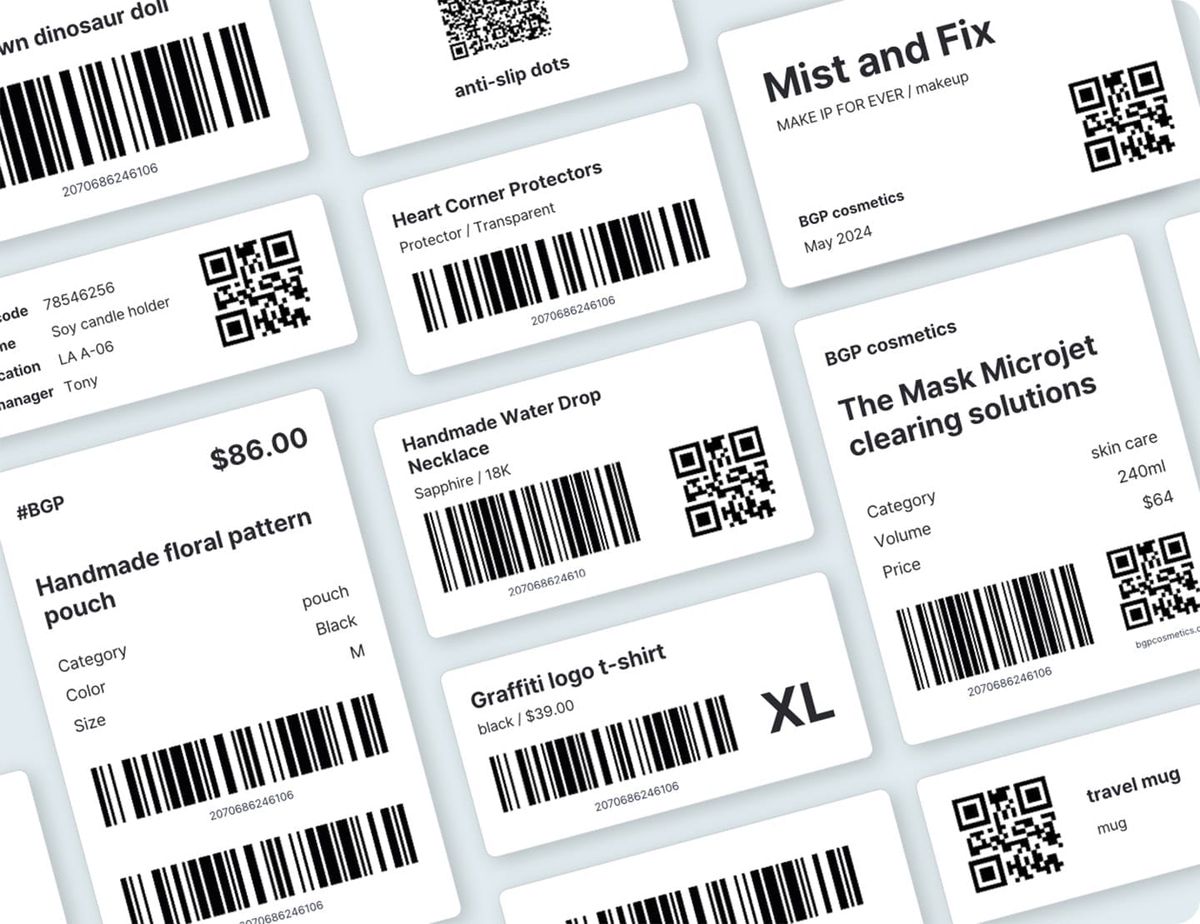
Barcode Scanning Support
BoxHero's platform includes robust barcode scanning capabilities. The system allows users to scan barcodes using their mobile devices, eliminating the need for separate barcode scanning hardware. This feature supports various barcode formats, including:
- 1D barcodes (e.g., UPC, EAN, Code 128)
- 2D barcodes (e.g., QR codes, Data Matrix)
Users can scan barcodes to quickly add items to their inventory, update quantities, or locate specific products within the system.
Barcode Generation
In addition to scanning existing barcodes, BoxHero can help you generate new barcodes for items that don't already have them. This feature is particularly useful for businesses that create their own products or need to assign unique identifiers to inventory items.
Custom Label Printing
BoxHero provides functionality to design and print custom barcode labels directly from the system. This feature allows businesses to create labels that include not just the barcode, but also other relevant information such as product names, SKUs, or storage locations.
Barcode Printing with BoxHero
Mobile App Integration
BoxHero's mobile app plays a central role in its barcode inventory control system. The app turns smartphones into portable barcode scanners, allowing users to:
- Perform inventory counts by scanning items directly from the warehouse or store floor
- Update inventory levels in real-time as products are received or sold
- Quick-add new items to the inventory by scanning their barcodes
- Search for items in the inventory database using barcode scans
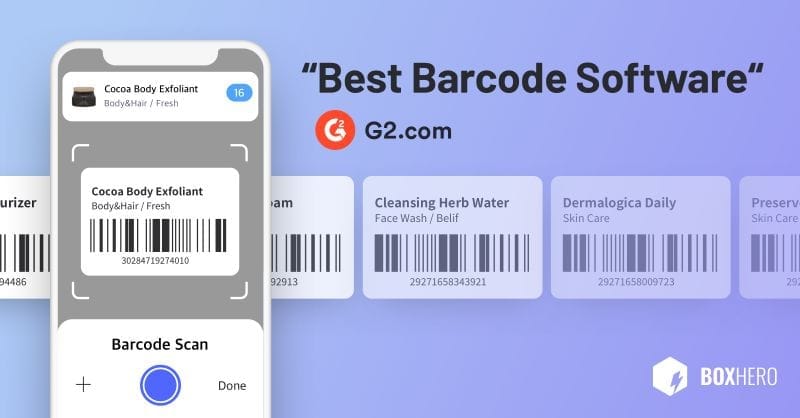
Making the Right Choice: Balancing Technology and Business Needs
Choosing the right inventory management technology—barcode or RFID—depends largely on your specific business needs, including budget, scale, environment, and the need for real-time data updates.
Barcodes offer a cost-effective, straightforward approach suitable for smaller operations or environments where line-of-sight scanning is feasible. On the other hand, RFID technology, though more costly, provides greater efficiency in dynamic environments with its ability to handle bulk scans and track items without direct line-of-sight.
Ultimately, the right choice depends on your unique business needs and future growth plans. Whichever path you choose, implementing an effective inventory management system is vital for business success.
BoxHero stands out as a robust inventory management solution that supports barcode technology to refine inventory processes. We encourage you to explore BoxHero’s features to see how it can enhance your inventory control and management strategies.


